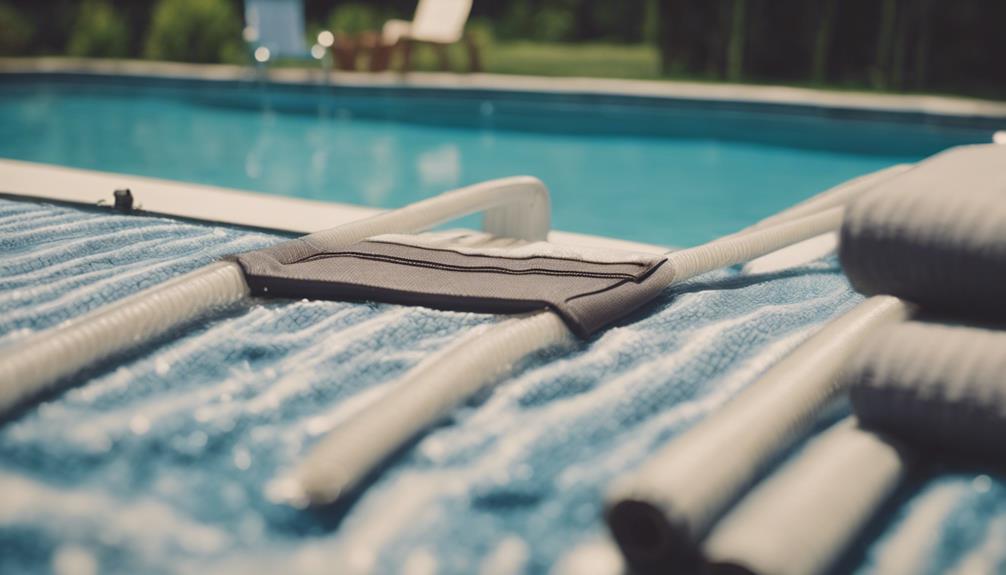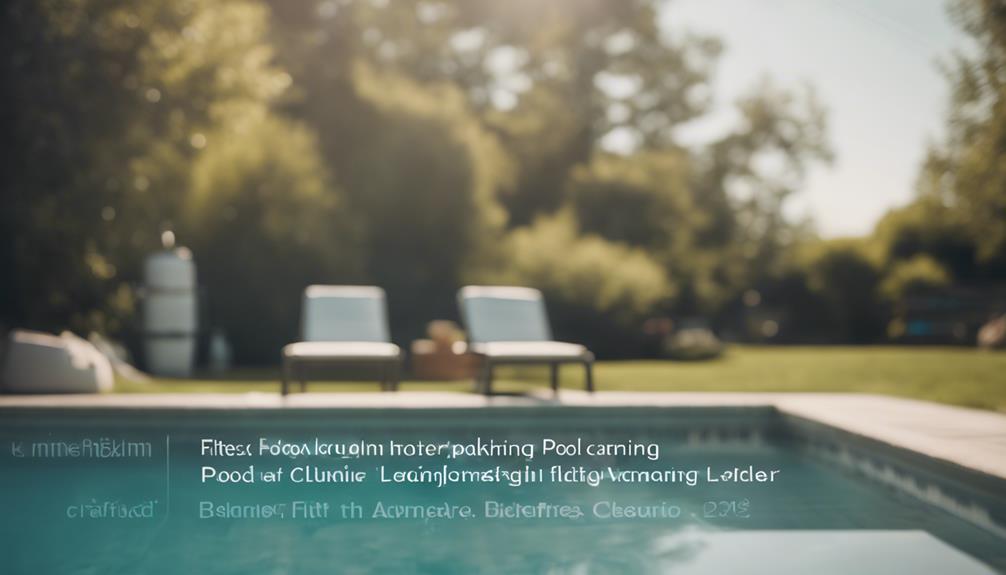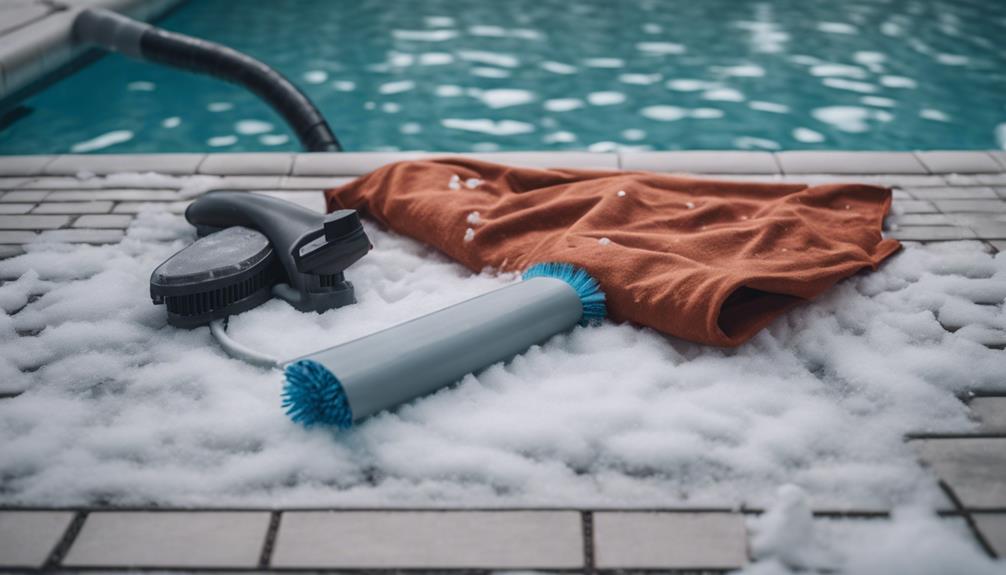When choosing a portable battery fan, balancing runtime and airflow depends on motor power, blade design, and battery size. Higher speeds boost airflow but drain the battery faster, while larger capacity batteries extend use time but add weight. Adjusting settings, optimizing placement, and understanding your needs help find the best balance. If you keep exploring, you’ll discover how technology and design choices can maximize both performance and battery life.
Key Takeaways
- Higher fan speeds increase airflow but reduce battery runtime due to greater power consumption.
- Lowering fan speed extends runtime but decreases airflow, affecting cooling effectiveness.
- Larger batteries provide longer usage but add weight, impacting portability and maneuverability.
- Optimizing placement and using the lowest effective speed balances airflow needs with battery longevity.
- Advanced features like smart sensors can adjust speed automatically, optimizing airflow and conserving energy.
Understanding Power Consumption in Portable Fans

Have you ever wondered how much energy a portable fan uses? Power consumption depends on several factors, including motor size, blade design, and fan speed. Generally, these fans are designed to be energy-efficient, drawing less power than household models. When you operate the fan at higher speeds, it consumes more electricity due to increased motor activity. Conversely, running it at lower speeds saves energy but may reduce airflow. The wattage rating, usually between 5 to 20 watts, gives you a good idea of how much power the fan needs. Keep in mind that continuous use at high speeds can drain your battery faster, impacting overall runtime. Understanding these elements helps you choose a fan that balances airflow needs with energy efficiency. Additionally, battery capacity plays a crucial role in determining how long your portable fan can operate on a single charge. Being aware of power consumption factors can help optimize your device’s performance and battery life. Proper management of fan speed settings can further enhance energy savings and prolong usage time. Additionally, advancements in energy-efficient motor technology are helping to reduce power consumption even further.
How Battery Capacity Affects Runtime
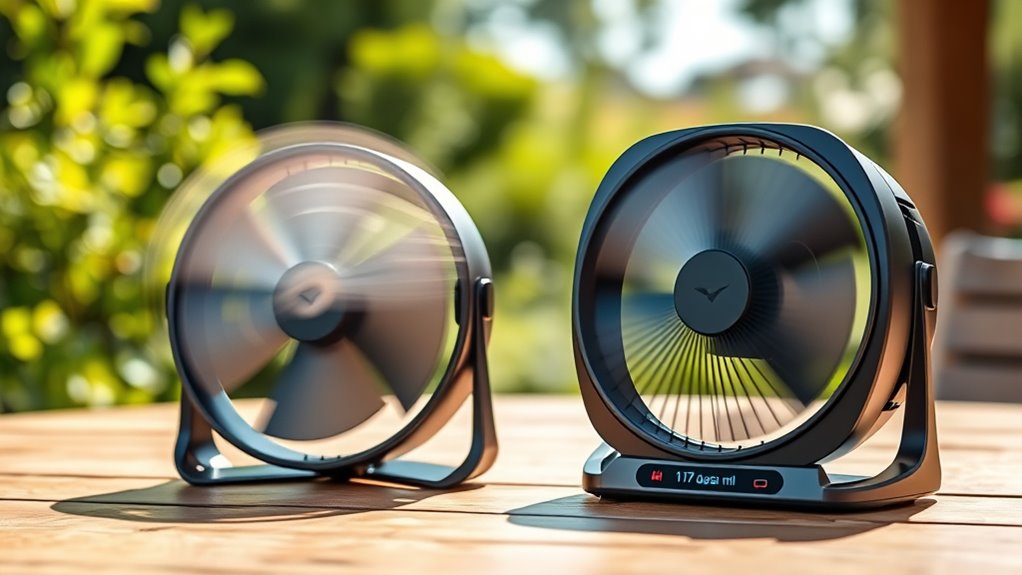
The battery capacity of your portable fan directly determines how long it can run on a single charge. A larger capacity means more stored energy, which translates to longer operation time. For example, a fan with a 5000mAh battery might run for 6 to 10 hours, depending on how much power it consumes at different settings. Conversely, a smaller battery, like 2000mAh, may only last 2 to 4 hours. Keep in mind that running the fan at higher speeds drains the battery faster, reducing runtime. If you need extended use without recharging, opt for a fan with a higher capacity. However, remember that bigger batteries often add weight and size, so balance your needs for portability and endurance. Additionally, battery technology continues to improve, offering better energy density and longer-lasting performance for portable fans.
The Relationship Between Fan Speed and Airflow
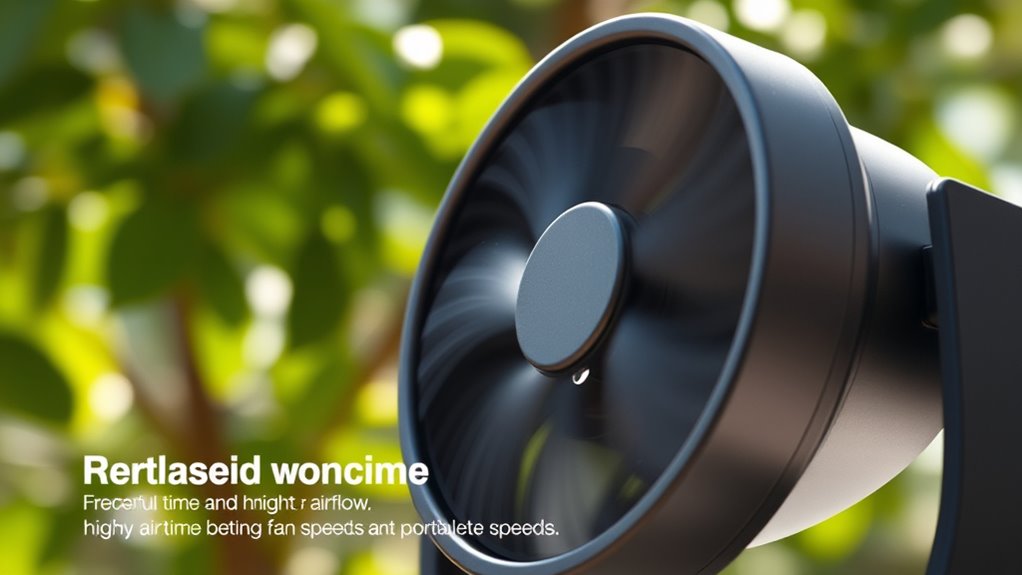
Adjusting the fan speed directly impacts the airflow you experience. When you increase the speed, the fan blades spin faster, pushing more air and creating a stronger breeze. Conversely, lowering the speed reduces airflow, which can extend battery life but lessens cooling effectiveness. Higher speeds produce a more noticeable airflow, ideal for hot days or quick cooling needs. However, this also drains the battery faster. To help you understand the relationship, here are some key points:
- Increased speed = higher airflow, shorter runtime
- Decreased speed = lower airflow, longer runtime
- Fan design influences airflow efficiency at each speed
- Ideal balance depends on your cooling needs and battery capacity
- Different fan tuning settings can optimize airflow and runtime based on user preferences
Additionally, understanding headphone compatibility and how different connections affect performance can help you choose the right device for your needs and ensure optimal operation. Knowing this helps you manage performance and battery life effectively, especially when considering personality traits that influence user preferences.
Design Factors Influencing Performance and Duration
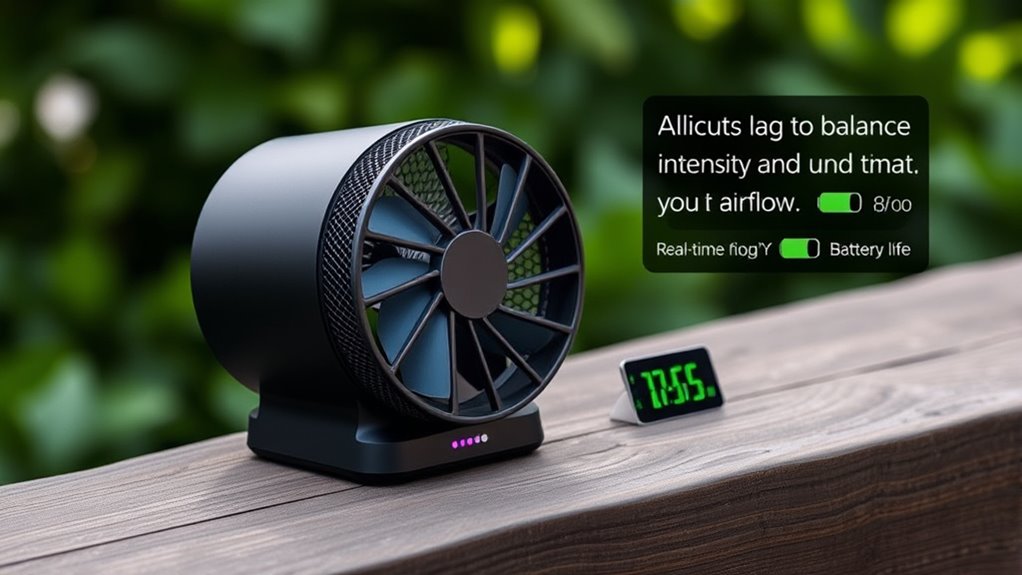
Design factors such as blade shape, motor quality, and overall construction substantially influence a portable battery fan’s airflow performance and how long it can run. The shape and size of the blades determine how efficiently air is moved; wider blades generally generate more airflow but may require more power. High-quality motors operate more efficiently, consuming less battery while maintaining strong airflow. Durability and build materials also matter; sturdy construction ensures consistent performance and longer lifespan. Motor efficiency plays a crucial role in balancing airflow and runtime, as more efficient motors can deliver better performance without draining the battery quickly. Compact, lightweight designs prioritize portability but might sacrifice airflow or runtime if not optimized. Conversely, larger, sturdier fans tend to have better airflow and longer operation but less portability. Paying attention to these design elements helps you choose a fan that balances airflow and battery life to suit your needs.
Balancing Airflow and Battery Life: Practical Tips

To extend your fan’s battery life without sacrificing comfort, start by adjusting the fan speed to a lower setting when full airflow isn’t necessary. Choose a battery capacity that matches your typical usage to avoid running out of power unexpectedly. Proper placement also helps maximize airflow efficiency, so position your fan where it can circulate air effectively with less effort.
Optimize Fan Speed Settings
Balancing airflow and battery life requires careful attention to your fan’s speed settings. Adjusting the speed lets you find a sweet spot where airflow is sufficient without draining the battery too quickly. Start by setting the fan to a lower speed when you need minimal airflow, saving power. If you need more cooling, increase the speed gradually until you reach your comfort level. Keep in mind:
- Use the lowest effective speed for extended runtime
- Increase speed only when necessary
- Switch between speed modes based on activity or environment
- Regularly monitor battery life to adjust settings proactively
- Being mindful of sound vibrations can also influence how effectively sound therapy or sound healing practices complement your cooling needs.
- Understanding the value of home security systems can help you better protect your device and ensure its safety during outdoor use.
Choose Suitable Battery Capacity
Choosing the right battery capacity for your portable fan is essential to guarantee you get enough airflow without sacrificing too much battery life. A larger capacity offers longer runtime but adds weight and size, which may reduce portability. Conversely, a smaller battery saves space and keeps the fan lightweight but limits how long it can run at higher speeds. To find the best balance, consider how long you’ll need the fan powered and at what airflow level. If you use it outdoors for extended periods, opt for a higher capacity battery. For short, casual use, a smaller battery may suffice. Always check the manufacturer’s specifications to ensure the battery capacity aligns with your needs, maximizing airflow while maintaining practical battery life. Understanding battery specifications can help you make a more informed decision about which capacity best suits your needs, especially considering how butter storage conditions influence product quality over time. Additionally, being aware of energy consumption patterns can help optimize your fan’s performance and battery efficiency. Properly managing battery health ensures consistent performance and longer lifespan of your portable fan. Being mindful of power management features can further enhance overall efficiency and user experience.
Use Proper Placement Techniques
Proper placement of your portable fan can considerably impact both airflow and battery life. To maximize efficiency, position the fan where it can circulate air effectively without overworking the motor. Keep the fan close enough to direct airflow toward your face or the area you want cooled, but avoid blocking vents or obstructing airflow paths. Elevate the fan to prevent airflow stagnation and ensure even cooling. Additionally, avoid placing the fan in high-draft areas that cause unnecessary strain, which drains the battery faster. Here’s how to optimize placement:
- Position the fan at an angle that directs airflow smoothly
- Avoid blocking air intake or exhaust vents
- Elevate the fan for better coverage
- Keep it away from drafts or turbulent air sources
- Adjust the fan’s position periodically to maintain optimal airflow and conserve battery life by preventing unnecessary strain from turbulent air sources. Smart placement balances airflow and conserves battery life, especially when considering cost-effective solutions for longer use. Incorporating indoor growing techniques can help maintain a comfortable environment while reducing energy consumption and supporting overall air quality improvements. Additionally, choosing a fan with high-efficiency motors can further extend runtime and improve performance.
Common Technologies Enhancing Fan Efficiency

Advancements in technology have considerably improved the efficiency of portable battery fans. Modern fans use brushless DC motors, which deliver higher torque and lower energy consumption compared to traditional motors. Blade designs have also evolved; aerodynamically optimized blades reduce air resistance, boosting airflow while using less power. Additionally, some fans incorporate smart sensors that adjust speed based on ambient temperature or humidity, ensuring ideal airflow without wasting battery life. Variable speed controls allow you to fine-tune performance, balancing airflow and runtime. Lightweight materials and improved manufacturing techniques further enhance portability and efficiency. These technological innovations help you get more airflow with less energy, maximizing runtime without sacrificing cooling effectiveness. Moreover, understanding fan efficiency can guide you in selecting models that offer the best balance between airflow and battery life. Recognizing the role of power management can also help optimize your device’s performance and extend battery longevity, especially when combined with battery capacity considerations. Recent developments in AI-driven algorithms are also being explored to automatically optimize fan settings based on environment data.
Making an Informed Choice: What Matters Most?

With so many features and technologies available, understanding what truly matters helps you pick the right portable battery fan. Think about your priorities: do you need longer runtime, higher airflow, or a balance of both? Your decision depends on your specific needs and usage scenarios. Consider these key factors:
- Battery life: How long you want the fan to run on a single charge.
- Airflow capacity: The amount of air moved, affecting cooling effectiveness.
- Portability: Size, weight, and ease of transport.
- Additional features: Noise level, adjustable settings, or built-in extras like LED lights.
Focusing on what matters most to you guarantees you select a fan that fits your lifestyle and environment without unnecessary compromises.
Future Trends in Portable Fan Technology
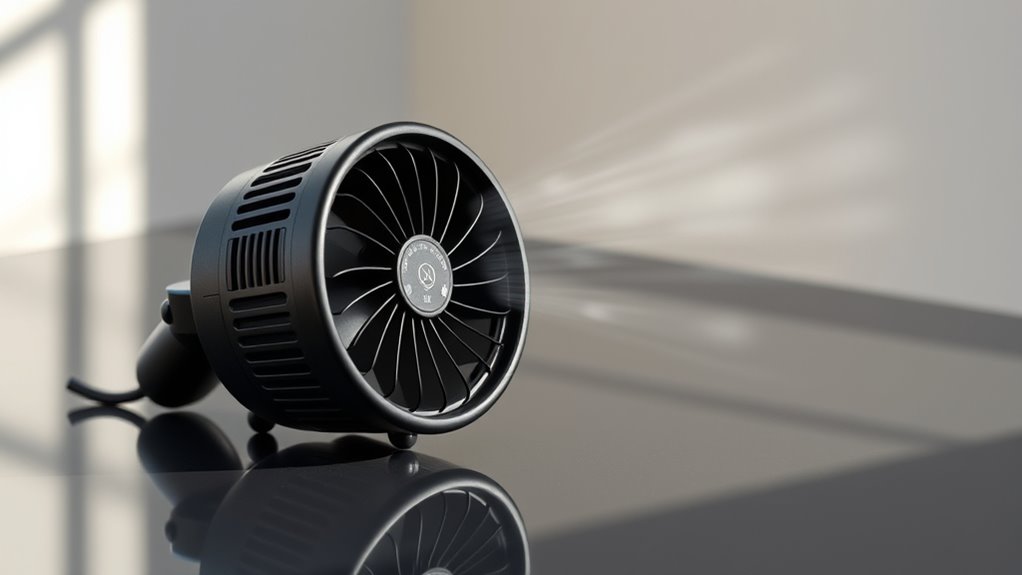
As technology continues to evolve, portable fan designs are becoming more innovative, integrating smarter features and improved performance. You can expect future fans to include intelligent controls, such as app connectivity, allowing you to adjust settings remotely or set custom airflow patterns. Battery technology will likely see significant improvements, enabling longer runtimes without sacrificing airflow power. Lightweight, eco-friendly materials will become more common, making fans easier to carry and more sustainable. Additionally, fans may incorporate noise reduction features, offering quieter operation for work or sleep. Some designs might even combine multiple functions, like air purifiers or humidifiers, to maximize utility. These advancements will help you enjoy more efficient, convenient, and versatile portable fans tailored to your needs.
Frequently Asked Questions
How Does Ambient Temperature Affect Portable Fan Performance?
Ambient temperature impacts your portable fan’s performance because hotter air makes it harder for the fan to cool you effectively. When it’s high outside, the fan may run longer to provide relief, draining its battery faster. Cooler temperatures help the fan work more efficiently, conserving battery life. So, you’ll notice your fan’s airflow might decrease in extreme heat, and its runtime could shorten as it struggles to cool the air.
Are There Safety Concerns With Long-Term Battery Use?
You’re right to ask about long-term battery safety. While batteries are generally safe when used properly, prolonged use can cause overheating or reduce lifespan if not managed well. Make sure to follow manufacturer guidelines, avoid overcharging, and store batteries correctly. Remember, a stitch in time saves nine—regular checks can prevent bigger issues down the road. Proper care keeps your fan running smoothly and safely for the long haul.
Can Portable Fans Be Used While Charging Simultaneously?
You can usually use portable fans while charging, but it depends on the model. Some fans are designed for simultaneous use and charging, while others might overheat or reduce battery life if used while plugged in. Always check the manufacturer’s instructions to guarantee safety and proper functioning. If you’re unsure, it’s best to avoid using the fan during charging to prevent potential damage or safety risks.
What Maintenance Is Required to Optimize Fan Longevity?
To keep your portable fan working well for a long time, you should regularly clean the blades and vents to prevent dust buildup. Check the battery contacts and charge the unit as recommended by the manufacturer. Avoid overcharging, and store the fan in a cool, dry place when not in use. These simple steps help maintain ideal performance and extend your fan’s lifespan.
How Do Different Battery Chemistries Impact Performance and Safety?
Different battery chemistries substantially impact your fan’s performance and safety. Lithium-ion batteries offer high energy density and long life but can pose fire risks if damaged or improperly charged. Nickel-metal hydride batteries are safer and more environmentally friendly but provide less power and shorter run times. You should choose a chemistry based on your safety preferences, usage needs, and available charging options to guarantee peak performance and safety.
Conclusion
Ultimately, finding the perfect portable fan is like tuning a delicate instrument—you balance airflow and battery life to hit your sweet spot. By understanding how power, speed, and design work together, you make smarter choices that keep you cool without draining your battery. Stay informed about the latest tech, and you’ll navigate the trade-offs with confidence, turning the pursuit of comfort into a breeze rather than a storm.



